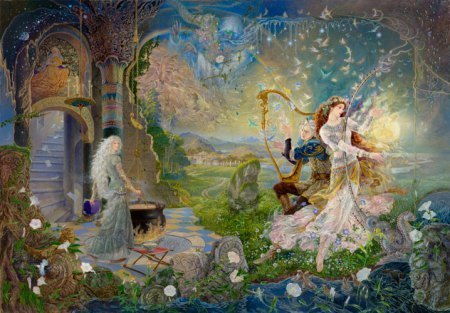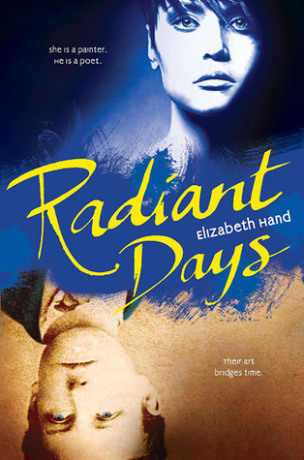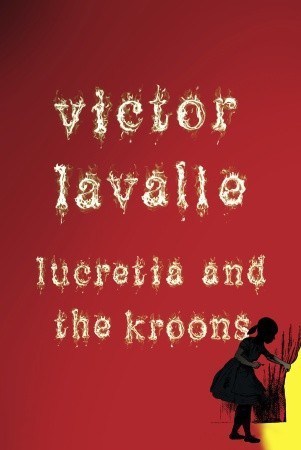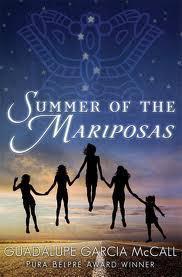Craig Laurance Gidney's Blog, page 66
October 5, 2012
Currently at the Revision stage of BEREFT
I have a few more scenes, and things to tighten up in the manuscript this weekend. It’s going to be a queue up the ambient music in my iPod, roll up my sleeves kind of weekend!


October 2, 2012
REVIEW: The Bards of Bone Plain by Patricia A. McKillip
Above is the Kinuko Craft cover for Patricia A McKillip’s THE BARDS OF BONE PLAIN. Take a gander at it. It’s intricate, full of enchantment, done in a neo-classical style. Sylph-like ladies in translucent fabrics, butterflies exhaling from golden harps, twisty hidden images. Craft’s cover art mimics McKillip’s wordcraft. Richly embroidered filmy lacy language, full of opacity and mystery. I mostly read McKillip to revel in writing on the sentence level. The new book has all of the hallmarks of McKillip’s fiction in that regard.
The novel is set both in the past and present of the kingdom of Belden. The past sections are more medieval and center around a wandering bard and his trials and tribulations. The present sections center around a bardic school, located in the capital city. The present here has steam-powered technology, perhaps a nod to the current preoccupation of steampunk. The present plot line mostly meanders and has a “cozy” non-magical fantasy-of-manners feel of books like, say Ellen Kushner’s Swordspoint while the past storyline is very Celtic-based high fantasy. The past plotline has more oomph, while the present plotline is more character-driven. Of course, the two plotlines eventually, and slowly, converge. The themes–magic hidden in language and music–are McKillip’s stalwart themes.
The beautiful writing, full of lovely images, however, does not hide the lack of narrative tension in the plot. McKillip loves her quirky characters–which include an archaelogist princess and a bored but studious bard–to put them into too much danger. As a result, the sinister elements and subsequent suspense falls flat. Still, THE BARDS OF BONE PLAIN, if kind of slight, is a wonderful introduction to McKillip’s oeuvre.
Patricia A. McKillip on her fiction.


September 23, 2012
Inspiration and the Perfect Day
Today was a perfect day. The weather was that lovely moderately temperate 72 degrees. The sky was glassy blue and cloudless. And it was the Annual National Book Festival, that takes place on the National Mall. With my friend and fellow book nerd, Chris Herrmann, I saw heard authors talk and read about their books. Authors seen include: the graphic novelist Craig Thompson; Justin Torres (author of “We The Animals”); rock star author Junot Diaz; and fellow spec fic author Nalo Hopskinson. All of the authors gave inspiring speeches, which help during the completion of BEREFT.
(Pictured: Nalo Hopkinson and me, along with a young fan of Nalo’s. Picture by author Tom Doyle)


September 18, 2012
REVIEW: Salsa Nocturna by Daniel José Older
The art of the verbal quip is on display in Salsa Nocturna, a debut collection of linked stories by Daniel José Older. Set in modern New York, most of the stories deal with the adventures of half-resurrected soulcatcher/ Agent of the New York Council of the Dead Carlos Delacruz as he deals with the various cases the bureaucratic organization throws his way. These include the absurd (a ghostly wooly mammoth) and the terrifying (a horde of soul-eating dolls on Staten Island). Some of the stories follow interlopers in Agent Delacruz’s life, such as a supernatural old woman who collects the city’s psychic stories, or a taxicab driver hired by Delacruz’s crew. The action scenes are full of spiritual mayhem and unfold like a movie, with quick cut scenes and rapidfire prose. These aspects alone are worth giving the collection a try. While not a novel, each story builds on another in a sustained narrative arc.
But the real star is the voice the stories are told in. With one exception, all of the tales are deep first person narratives, full of messy and funny observations about the zeitgeist. Mostly centered around the black, Puerto Rican and Dominican enclaves of the city, the narratives are soaked in vernacular and inside jokes. Some of the best scenes in this short collection occur when the characters—particularly Delacruz’s ghostly sidekicks Riley and Gordo—shoot the shit with their crude gallows humor. New York City itself—from its various tribes to the hipster invasion—is very much a character. At times, the Salsa Nocturna reminded me of the witty genre-savvy of Joss Whedon, the nouveau noir of Walter Mosely, and the character-driven fiction of Junot Diaz.


September 14, 2012
New Website Banner and Thank You to Thomas Drymon
The fabulous Thomas Drymon made a new banner for this site. Take a moment and check out his site. He also took the pictures of me. Below are some of the alternate designs he came up with.


September 10, 2012
REVIEW: Radiant Days by Elizabeth Hand
Elizabeth Hand’s first foray in YA fiction is not quite a time travel book, or historical fiction, or a bildungsroman, though it has elements of all three sub-genres.
In 1978, young Merle Tappitt is from the middle of nowhere, Virginia, where she lives with her alcoholic father and two younger brothers. She has just gotten a prestigious scholarship to the Corcoran School of Art, located in Washington, DC (the setting of many a Hand novel). She is a young lesbian, and in DC just before and during the burgeoning harDCore (punk) scene. She manages to get kicked out of school, in spite of her talent (mostly due to her lack of preparation and the culture-shock), and breaks up with her manipulative older girlfriend, who happens to be a married art instructor. Merle, who has bratty tendencies but explosive artist talent, becomes homeless, and starts expressing herself through graffiti.
In 1870, Arthur Rimbaud is a fifteen year would-be poet, a rebel without a cause, chaffing at the control that his cold religious fanatic mother holds over him. Before and during the Prussian War, he runs away from home, and goes to Paris several times, meaning to get into the poetry scene there. He manages to get arrested, and at one time, joins in the Paris Commune during the Prussian siege.
The two strands of the book—vivid artpunk memoir and biographical fiction—smash into each other in a clever way when, through mysterious magic, both malcontent teenagers meet . Rimbaud wanders through late 70s Georgetown, and Merle ends up in the Paris commune, both with each other as guides. The parallels and differences between these two soul twins is sometimes humorously highlighted: both are visionary queer art-nerds from the sticks.
Hand’s familiarity with DC’s punk scene comes and Merle’s first person narration is the more lively of the two narrative strands. The Rimbaud sections have a bit of a studied air about them, as if she’s handling the material with kid gloves. When the two young artists met, everything about the book—the language, the dialogue, the lush imagery—is suffused with magic. These are sections are when the prose sings and become flavored with Rimbaud’s visionary poetry.
In the end, this brief novel is more a meditation on Art and Youth than it a traditional YA novel. The ending scene is quite lovely.
As a DC native, it was a hoot to see my hometown through someone else’s eyes. I loved how Hand was enchanted as was by the Rimbaud mythos—the title of this blog, Strange Alphabets, refers to one of Rimbaud’s most famous poems.


September 2, 2012
REVIEW: Deep Water by Pamela Freeman (Castings Trilogy #2)
The second book of the Casting Trilogy draws us deeper in the world of the Eleven Domains and its mysterious magic. Gods that are whispers in the mind, demons of the deep, spirits of Earth, Wind, and Fire (no pun intended). It follows the adventures of Bramble, Ash, and Saker, and adds the perspectives of Martine and Leof as they each (both knowingly and unknowingly) fight against the plague of vengeful revenants that threaten the land. Freeman’s world is pretty standard Medieval fantasy fare, with a warlord/serf system set in place and magic at the fringes. What makes it interesting is that Freeman tells her tale from lower caste/class and outsiders, and with a decidedly feminist perspective that’s refreshing in the “grimdark” fantasy genre. Imagine a George R.R. Martin novel written by Ursula LeGuin, for a reference point. Her prose sings and her characters are complex, and the first person narratives from minor characters make her fantasy world become more grounded. The larger allegory—the mistreatment of an ethnic minority in a colonialist society—is deliciously complicated and problematized. There were times the narrative dragged, but the last 50 pages go by at a fast clip. I look forward to seeing how Freeman ends her saga.


September 1, 2012
Publicity Photos (courtesy of Thomas Drymon)
August 11, 2012
REVIEW: Lucretia and the Kroons, by Victor Lavalle
Twelve year old Lucretia lives in an Queens apartment building with her single mother. Her best friend Sunny (nee Zhao Hun Soong) is dying of cancer. One day, after Sunny is back from a prolonged treatment session, Lucretia arranges a play date with her. Just when she Sunny is supposed to appear, Lucretia—called Loochie—finds out that Sunny has been kidnapped by the mysterious family of crackheads who live in the supposedly abandoned apartment 6D. Loochie goes up to save her friend. What she finds there is a twisted, monster haunted version of their neighbor, hidden in a small apartment.
This suspenseful novella crafts turns an urban legend into a tense YA horror story. The prose is nicely crafted, the mood teeters between classic horror and YA adventure. This slim book is a moving thriller that will remind you of Neil Gaiman’s CORALINE–but much darker. It firmly puts the urban in urban fantasy. The novella serves as a teaser for Victor Lavalle’s forthcoming horror novel, THE DEVIL IN SILVER. Fans of Colson Whitehead and China Mieville should check this one out.


August 9, 2012
REVIEW: Summer of the Mariposas by Guadalupe Garcia McCall
Syncretic religion mixes two separate religious traditions—say, Christianity with African Orisha worship—and combines them in a new way that honors both traditions. Garcia McCall has mixes Aztec and Mexican mythology with the ultimate quest story, The Odyssey and come up with a charming, richly layered YA novel. In a small Texas town, the 5 Garza sisters find a dead body floating in their summer watering hole. Odilia, the eldest of the girls, has a vision of Llorona, the mythic weeping woman, who tells her that she and her sisters must return the man’s body to his family in Mexico. She gives Odilia a pair of magic earrings that allow her to call on the magical intervention of Tonantzin, the sacred Aztec mother goddess, should they need it. Since the girls have a grandmother who lives in Mexico, they decide to go visit her as well. Thus begins their odyssey. Along the way, they have many adventures, including run-ins with wily sorceresses, lechuzas (owl-women), evil warlocks and chupacabras (goat blood suckers). Their adventures are thrilling, full of magic and sometimes quite funny.
Summer of the Mariposas is more than just a high concept work of fiction. The characters, even the magical ones, are real. The five sisters have distinct personalities—Brave Odilia, headstrong Juanita, the twins Velia and Delia who are both bratty and trade on their beauty, and the naïve 10-year old Pita. Odilia is the narrator of the story, and Garcia McCall manages to be both lyrical in her descriptions while also capturing the voices of twenty-first century teenagers. In addition to being a quest story, it is also a story about families and complicated relationships. Summer of the Mariposas weaves the mythic and the mundane together seamlessly. It is a superior work of magical realism. I look forward to seeing what Guadalupe Garcia McCall will write next.






















